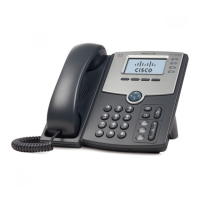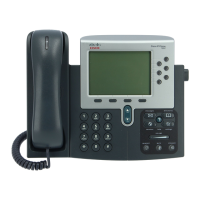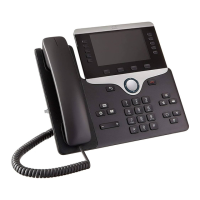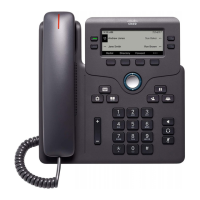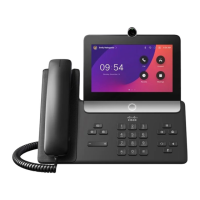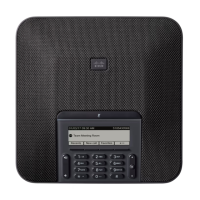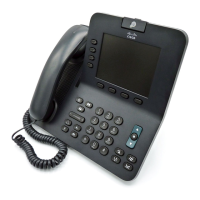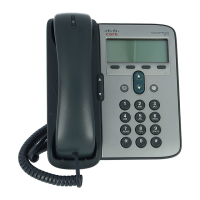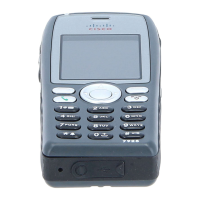1-7
Cisco SIP IP Phone Administrator Guide
Chapter 1 Product Overview
What Is the Cisco SIP IP Phone?
Configuration Features
The Cisco SIP IP phone provides the ability to:
• Configure Ethernet port mode and speed
• Register with or unregister from a proxy server
• Specify a TFTP boot directory
• Configure a label for phone identification display purposes
• Configure a name for caller identification purposes for each active line on a phone
• Configure a 12- or 24-hour user interface time display
Codec and Protocol Support
• G.711 (u-law and a-law) and G.729a audio compression.
• In-band dual tone multifrequency (DTMF) support for touch-tone dialing.
• Out-of-band DTMF signaling for codecs that do not transport the DTMF signaling correctly (for
example, G.729 or G.729a).
• Local (180 Ringing) or remote (183 Session Progress) call progress tone.
• Audio/Video Transport (AVT) payload type negotiation.
• Current date and time support via Simple Network Time Protocol (SNTP) and time zone and
Daylight Saving Time support.
• Call redirection information support via the Diversion header.
• Third-party call control via delayed media negotiation. A delayed media negotiation is one where
the Session Description Protocol (SDP) information is not completely advertised in the initial call
setup.
• Support for endpoints specified as fully qualified domain names (FQDNs) in the SDP.
• Remote reset and dial plan update support (via the Event header in NOTIFY messages).
Note See the “Supported Protocols” section on page 1-11 for additional supported protocols.
Dialing and Messaging Features
• Dial plan support that enables automatic dialing and automatic generation of a secondary dial tone
• Local directory configuration (save and recall) and automatic dial completion—Each time a call is
successfully made or received, the number is stored in a local directory that is maintained on the
phone. The maximum number of entries is 32. Entries are aged-out based on their usage and age.
The oldest entry called the least number of times is overwritten first. This feature cannot be
programmed by the user, however, up to 20 entries can be “locked” (via the Locked soft key) so that
they will never be deleted.
• Message Waiting Indication (via unsolicited NOTIFY)—Lights to indicate that a new voice message
is in a subscriber’s mailbox. If the subscriber listens to the message but does not save or delete the
message, the light remains on. If a subscriber listens to the new message or messages, and saves or
deletes them, the light goes off. The message waiting indicator is controlled by the voicemail server.
The indication will be saved over a phone upgrade or reboot.
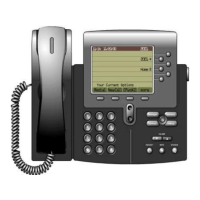
